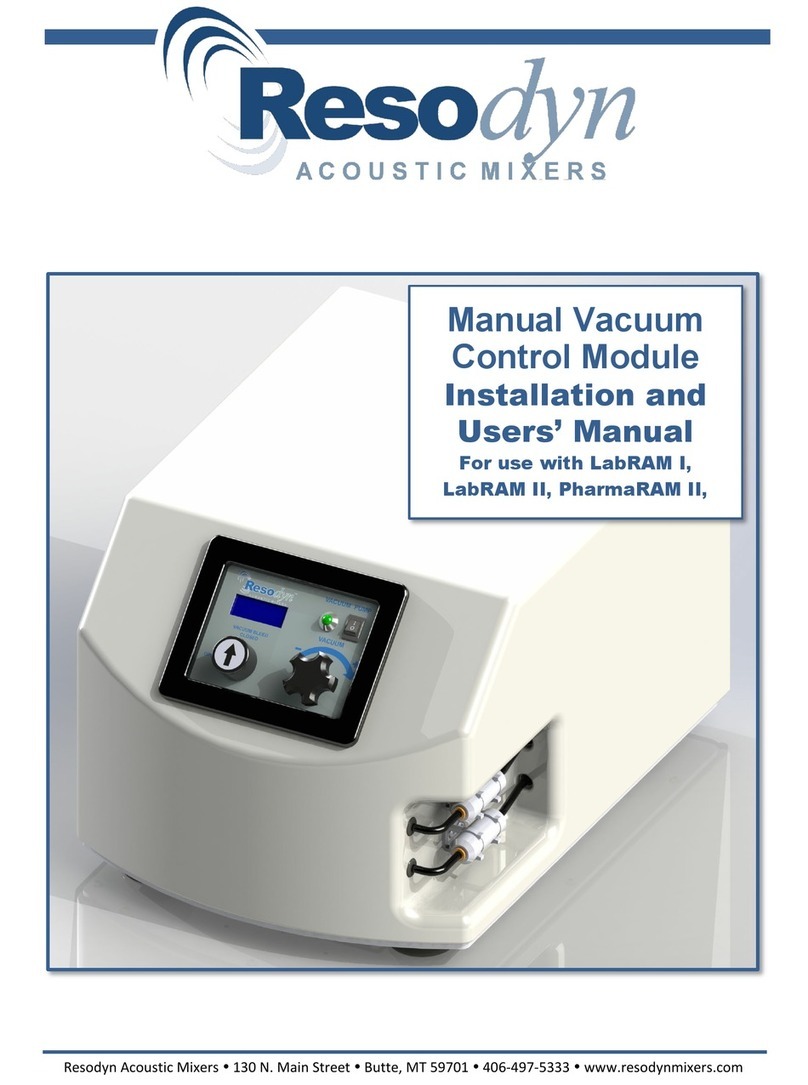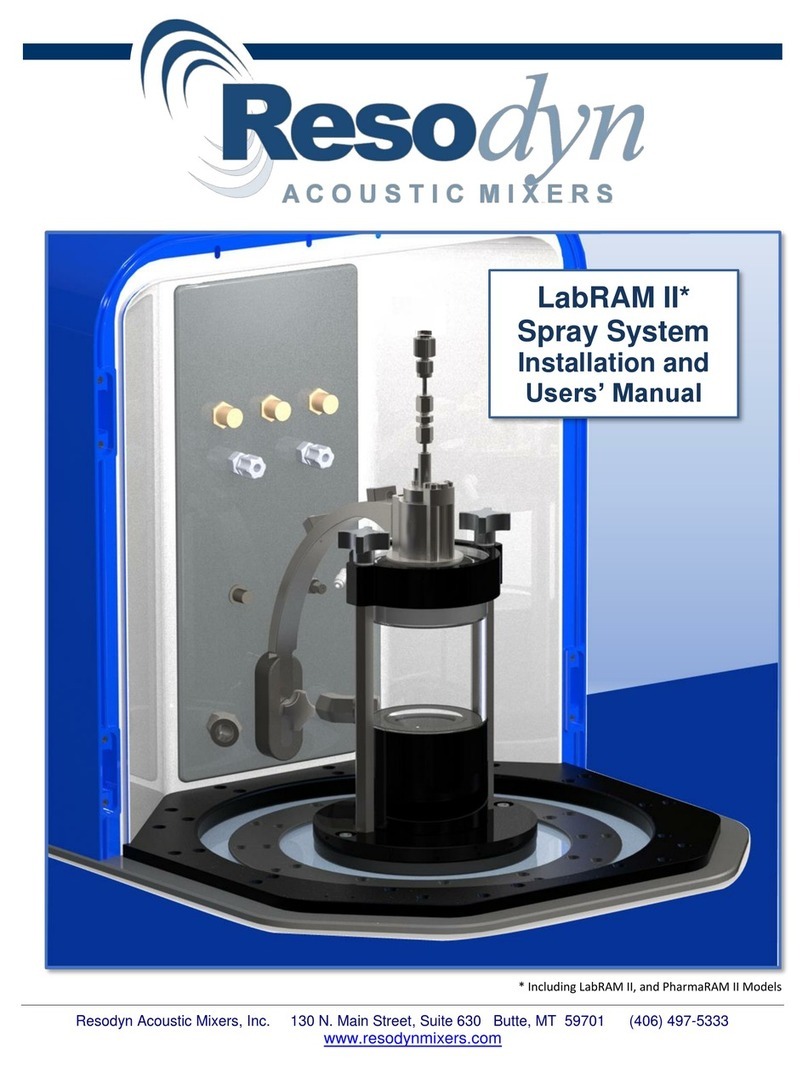Resodyn Acoustic Mixers 3 Rev. 072420
8.5 Run the Recipe...........................................................................................................26
8.6 Completion .................................................................................................................27
9HMI (Human Machine Interface) –Overview.................................................................28
9.1 Main Screen................................................................................................................28
9.2 Login...........................................................................................................................29
9.3 Operational Modes (Recipe and Auto)........................................................................29
9.4 Alarming .....................................................................................................................29
9.5 Setup and Configuration Screens ...............................................................................29
9.6 Viewer.........................................................................................................................30
10 Detailed HMI Operation –Security and Login................................................................30
10.1 Login Levels and Privileges ........................................................................................30
10.2 Screen Operations - Logging In/Out............................................................................31
10.3 Log Files.....................................................................................................................32
11 HMI Operation –Modes of Operation............................................................................33
11.1 Working in Recipe Mode.............................................................................................33
11.2 Screen Operations - Auto Mode..................................................................................36
12 HMI Operation –Alarms................................................................................................41
12.1 Screen Operations - Alarms........................................................................................41
13 HMI Operation –Viewer................................................................................................42
13.1 Screen Operations - Viewer........................................................................................42
14 HMI Operation –Setup and Configuration.....................................................................44
14.1 Status Tab..................................................................................................................45
14.2 Calibration Tab ...........................................................................................................45
14.3 Recipe Tab .................................................................................................................45
14.3.1 Screen Operations –Edit an Existing Recipe...................................................45
14.3.2 Screen Operations –Create New, Rename, and Delete...................................49
14.4 Setup1 Tab.................................................................................................................54
14.4.1 Auto Timer Group Box......................................................................................54
14.4.2 Machine Options Group Box ............................................................................54
14.4.3 Operational Options Group Box........................................................................55
14.5 Setup2 Tab.................................................................................................................55
14.5.1 Screen Operations –User Management ..........................................................56
14.6 Setting Date and Time................................................................................................57
14.7 Config Tab..................................................................................................................57
14.7.1 Screen Operations –Edit a Configuration ........................................................58
14.7.2 Screen Operations –Create a Configuration....................................................59
14.7.3 Configuration Usage.........................................................................................60
14.8 Data Tab.....................................................................................................................61
15 Care and Maintenance..................................................................................................62
15.1 Preventive Maintenance .............................................................................................62

































